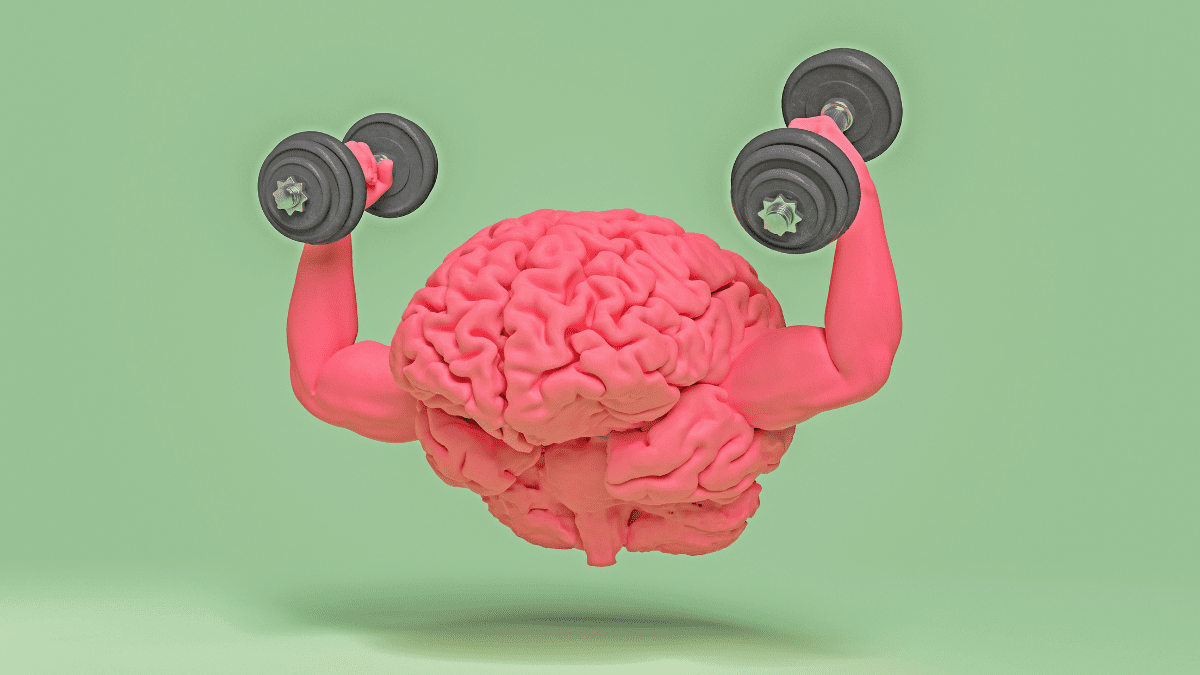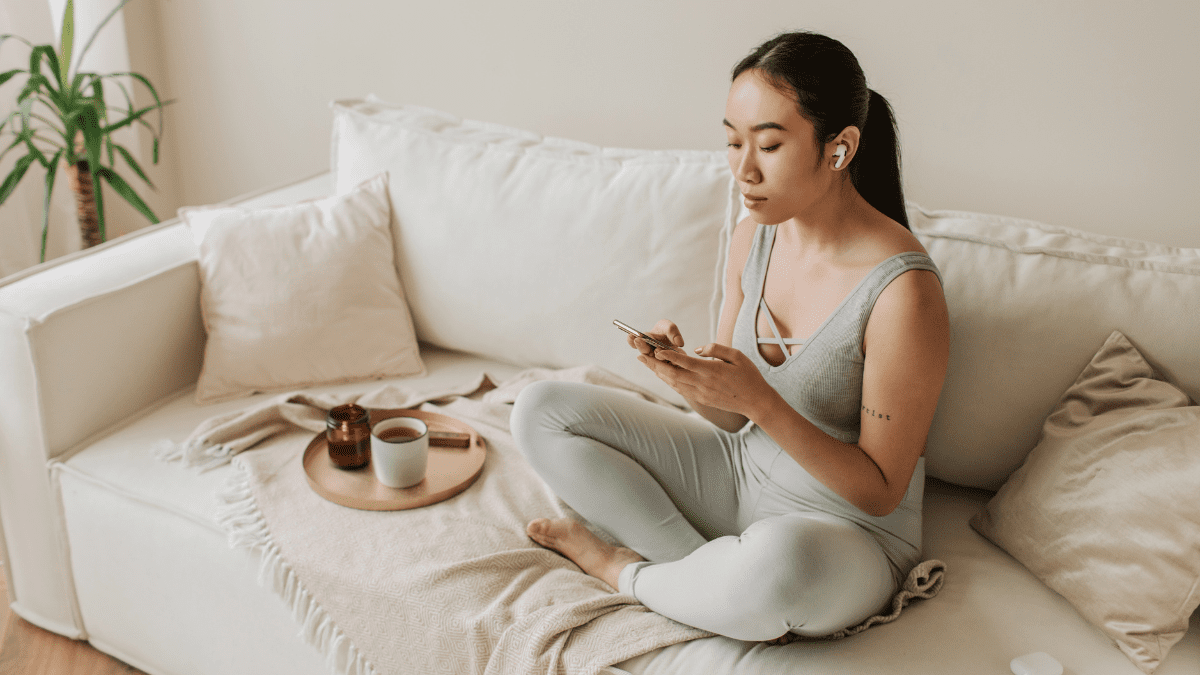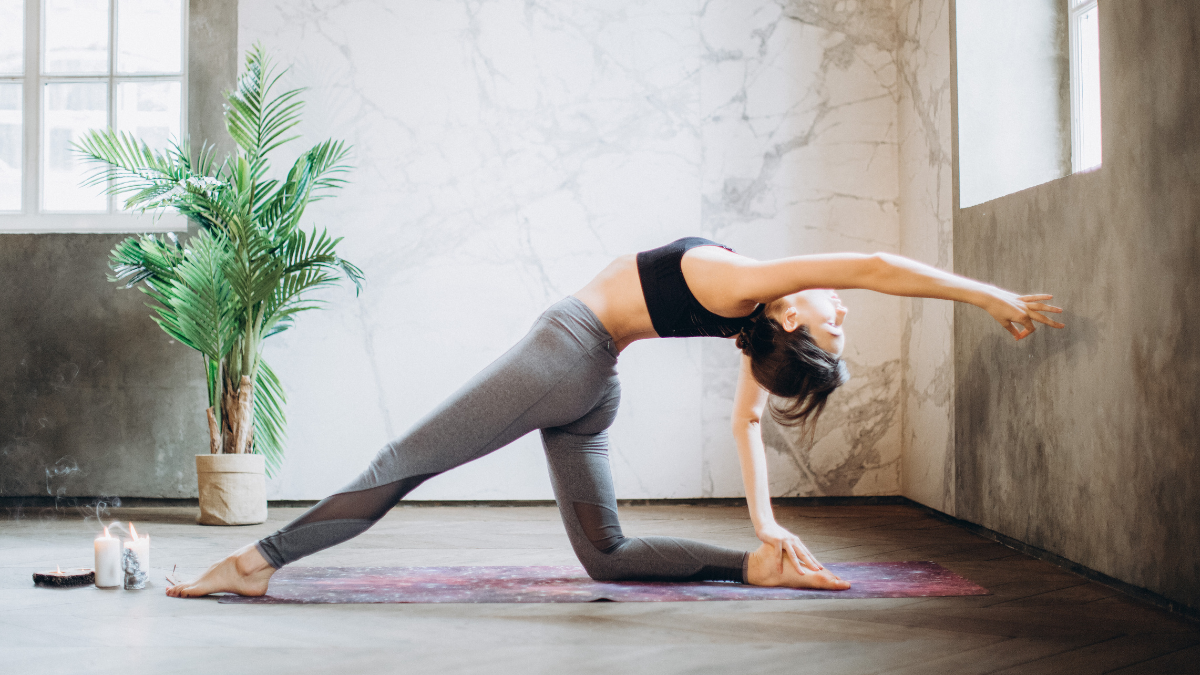Yoga for ADHD: The Powerful Secret That Changes Everything
Yoga for ADHD is the powerful secret no one talks about. Break free from chaos and discover calm, fast focus, and the relief you desperately crave today.

In This Article
- Why Yoga For ADHD Works When Nothing Else Does
- The Best Yoga Styles For ADHD Relief
- How To Start Yoga For ADHD — Even If You're Overstimulated
- Daily Yoga For ADHD Routines That Actually Work
- Real Lives Transformed By Yoga For ADHD
- Conclusion: Small Steps With Yoga For ADHD Lead To Big Change
- Yoga For ADHD — FAQ
Why Yoga For ADHD Works When Nothing Else Does
Why Is Yoga So Effective For The Mind And Body?
To begin with, yoga for ADHD minds gives what they crave most: structure, rhythm, and focus. Unlike chaotic environments, yoga slows everything down.
Additionally, each pose offers a physical anchor. That helps calm mental overstimulation. Breathwork, or pranayama, adds another layer of grounding.
Moreover, the body learns to self-regulate. With regular practice, it becomes easier to manage hyperactivity. The mind stops racing. The nervous system resets.
The best way to understand this connection is to look at what yoga does:
- Activates the parasympathetic nervous system
- Reduces cortisol and adrenaline
- Improves dopamine regulation
- Builds interoception (the sense of internal bodily awareness)
That’s exactly what ADHD brains struggle with.
Mini Checklist: What You Might Notice Early On
- Less fidgeting during the day
- Calmer mornings or bedtimes
- Faster recovery from emotional outbursts
- Improved ability to sit still or complete a task
Can Yoga For ADHD Improve Focus And Reduce Hyperactivity?
Yes — and here’s why. Most ADHD challenges begin with poor executive functioning. This includes working memory, impulse control, and emotional regulation.
Fortunately, yoga strengthens all three.
Through repeated breath-to-movement sequences, you build attention stamina. Then, you learn to follow through. You also become aware of your body’s cues before overwhelm hits.
For instance, drishti, or gazing points, help sharpen focus. Long-held poses like tree pose or warrior II require balance and stillness. That physical stillness teaches mental stillness.
To improve attention, consistency is key. Short, daily yoga sessions help more than random long ones.
What Does Science Say About Yoga For ADHD Symptoms?
Surprisingly, clinical research backs it up. While yoga isn’t a cure, it offers measurable benefits.
A study from Psychology Today found that children with ADHD who practiced yoga twice a week showed significant improvement in attention span and impulse control. Adults reported lower anxiety and more mental clarity.
Emerging evidence suggests that yoga for ADHD improves neural regulation and emotional stability in both children and adults, according to recent findings on Healthline.
The Best Yoga Styles For ADHD Relief
Which Yoga Calms The Restless Mind Fastest?
To begin with, not all yoga styles serve ADHD brains equally. While any movement helps, certain practices stand out.
Vinyasa yoga, for example, offers a dynamic flow that matches the internal rhythm of those with ADHD. Each breath leads into the next movement. That flow creates a sense of predictability.
On the other hand, Hatha yoga slows everything down. It builds body awareness and reduces sensory overload. This makes it ideal for winding down after overstimulating days.
The best way to choose? Try both. Then notice which one soothes your mind faster.
Quick Comparison: ADHD-Friendly Styles
- Vinyasa: Energizing, rhythmic, structured
- Hatha: Grounding, gentle, restorative
- Yin: Deep stretches, emotional release, stillness
When the mind feels scattered, matching energy levels with the right yoga style is key.
Can Restorative Yoga For ADHD Ease Emotional Overload?
Absolutely. Emotional dysregulation is a core ADHD struggle. Restorative yoga helps shift from chaos to calm.
This style uses props to support your body in restful poses. You stay in each position for several minutes. That long stillness slows down the nervous system.
To improve emotional resilience with yoga:
- Use bolsters or pillows for support
- Practice in a quiet, dim space
- Focus on breathing rather than perfection
With ADHD, your brain often misreads cues. Restorative yoga teaches it to interpret safety correctly — and to soften its response to stress.
Mini Routine: 3 Poses To Release Emotional Tension
- Legs-up-the-wall
- Reclined bound angle
- Child’s pose with a pillow under your chest
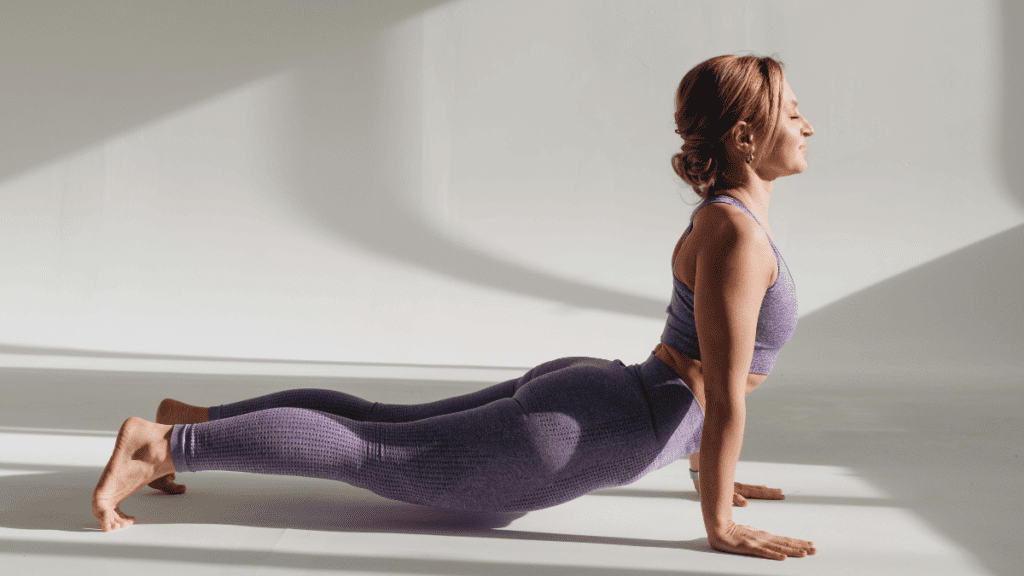
Is Kundalini Yoga A Game-Changer For Focus?
Yes — especially for those struggling with mental fog and anxiety. Kundalini yoga combines movement, breath, sound, and meditation. It brings energy into alignment.
Many ADHD practitioners find Kundalini’s structured sequences easier to follow. They involve repetition, which helps build muscle memory and internal discipline.
Recent studies suggest that Kundalini yoga for ADHD helps improve emotional clarity and enhances executive functioning through breath-focused meditation and mantra work.
How To Start Yoga For ADHD — Even If You’re Overstimulated
Can Beginners With ADHD Start Yoga Without Feeling Lost?
First of all, starting anything new with ADHD can feel overwhelming. Especially when your brain is already racing.
However, yoga doesn’t have to be complicated. You don’t need a fancy studio or an hour-long session. You just need a quiet space and your breath.
To make your first session ADHD-friendly:
- Begin with just 5 minutes
- Choose three simple poses you can repeat daily
- Set a consistent time (mornings or before bed)
Even better, keep your mat visible. Visual cues support habit-building. That’s crucial for ADHD minds.
Additionally, try guided videos with clear verbal instruction. Avoid overstimulating visuals or fast transitions.
Mini Beginner Sequence (under 5 mins):
- Easy seated pose with deep breathing (1 min)
- Cat-cow flow (1 min)
- Child’s pose (1–2 mins)
Remember, simplicity leads to consistency.
How To Stay Motivated To Practice Yoga For ADHD Every Day?
Let’s face it — consistency is the hardest part. But with the right strategies, it becomes much easier.
Here’s what helps most ADHD yogis stick with it:
- Use visual trackers or habit apps
- Pair yoga with an existing habit (like brushing teeth)
- Reward yourself after short sessions
Moreover, keeping a yoga journal boosts commitment. It helps ADHD minds recognize progress — even if it’s emotional, not physical.
To improve motivation further, try “body-doubling.” That means practicing yoga with a friend or teacher present — even virtually.
And if you skip a day? No guilt. Just pick it up again tomorrow. Progress, not perfection.
Should You Practice Yoga For ADHD Alone Or With A Guide?
That depends on your sensory needs. Some with ADHD find group settings overstimulating. Others feel more engaged with community energy.
Both options offer benefits:
- Solo practice: Greater flexibility, sensory control
- Guided sessions: Built-in structure, accountability
You may want to mix both. Start your week with a live class, then do shorter solo flows on other days.
Experts agree that practicing yoga for ADHD with the right support system helps reinforce attention and reduces anxiety, especially when routines are consistent and personalized
Daily Yoga For ADHD Routines That Actually Work
How Long Should You Practice Yoga For ADHD Daily?
To begin with, there’s no perfect number. However, studies show that consistency beats duration every time — especially for ADHD minds.
In fact, starting with just 10 minutes a day can create noticeable changes. That small win builds trust with yourself, which is essential when routines feel hard to maintain.
Even more importantly, short daily sessions help regulate your nervous system without overwhelming it.
The best way to structure your time:
- 5 minutes of breath + gentle movement
- 3 minutes of stillness (like seated meditation)
- 2 minutes of emotional check-in or journaling
As a result, your brain gets what it needs: structure, calm, and closure.
Furthermore, using a timer can help keep you focused and on track.
What A Balanced Yoga For ADHD Session Looks Like
Although there’s no one-size-fits-all, certain elements work well across the board.
To improve focus and calm, your session should follow a three-phase flow:
- Grounding phase: Breathwork + slow warm-up
- Activation phase: Standing poses like warrior or chair
- Integration phase: Deep stretches + final rest in savasana
Each part plays a key role. For instance, the activation phase helps discharge excess energy. The integration phase, on the other hand, seals the practice with stillness.
Daily ADHD Yoga Flow Checklist
- Start with 3 deep breaths
- Add 2–3 energizing poses
- End with 1 still posture (like legs-up-the-wall)
Additionally, use soothing music or silence — whatever helps your mind stay steady.
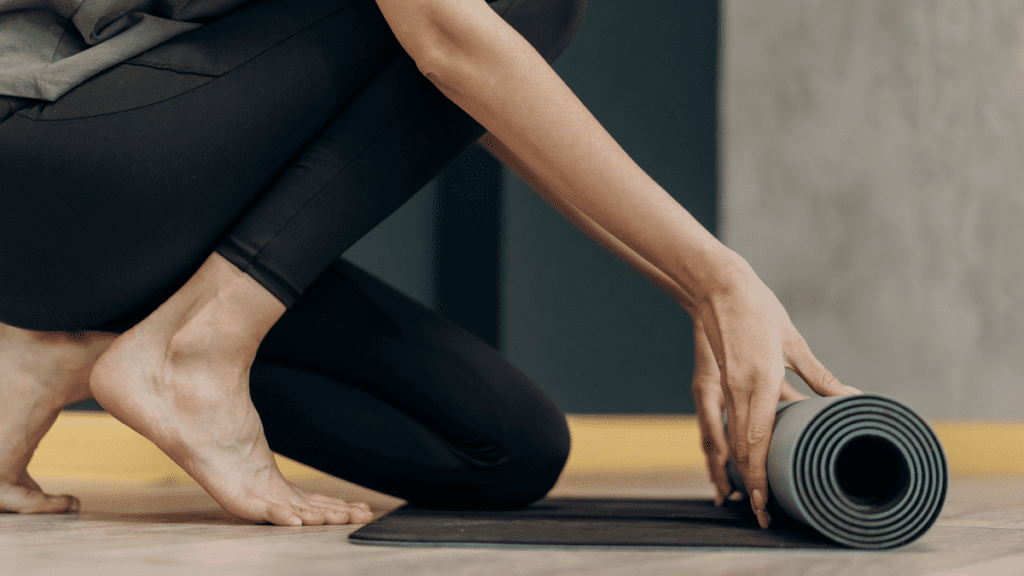
Is Morning Or Evening Yoga Better For ADHD Focus?
That depends on your personal rhythm. However, many with ADHD benefit most from morning sessions. Starting the day grounded sets the tone for fewer meltdowns and more clarity.
That said, evening yoga also works beautifully — especially when overstimulation builds throughout the day.
Try this simple approach:
- Mornings: Energizing and focus-building
- Evenings: Restorative and calming
Real Lives Transformed By Yoga For ADHD
What Are Adults Saying About Using Yoga For ADHD?
To begin with, the most powerful proof isn’t always found in research — it’s found in personal stories. Again and again, adults with ADHD share how yoga became their anchor in chaos.
For instance, many describe how just ten minutes of daily yoga dramatically reduced their anxiety. Others report that it helps them finally feel present — something their racing thoughts never allowed before.
Common benefits ADHD adults experience:
- Fewer emotional outbursts
- Improved work focus and task follow-through
- Calmer mornings and better sleep
- A deeper connection to their own bodies
Furthermore, the structure of yoga gives them a rare sense of internal control. And for ADHD minds, that’s life-changing.
Even more encouraging, these shifts happen without medication side effects or pressure to “fix” themselves.
How Do Parents Use Yoga For ADHD With Their Kids?
Understandably, many parents feel helpless when their child struggles with ADHD. However, yoga offers a gentle, empowering tool that both child and parent can enjoy.
Because of its visual and physical nature, yoga is especially effective for kids. Poses like tree pose, cat-cow, or downward dog become fun games that improve focus without pressure.
To improve your child’s focus with yoga:
- Keep sessions short — 5–7 minutes max
- Use storytelling or animal-themed poses
- Practice together to create connection
Moreover, yoga provides an emotional release for kids who may not have the words to express frustration. As a result, meltdowns often become less frequent.
Additionally, schools and therapists now use yoga-based mindfulness to help children self-regulate and reset, especially after overstimulation.
Can Long-Term Yoga For ADHD Replace Other Strategies?
Not necessarily — but it can become a foundational support. Over time, yoga builds the body’s ability to manage stress without shutting down.
Although it may not replace therapy or medication for everyone, it enhances both.
In fact, many long-term ADHD yoga practitioners report feeling more emotionally resilient, less reactive, and more in control of their routines.
Conclusion: Small Steps With Yoga For ADHD Lead To Big Change
To begin with, ADHD can feel like a storm. Thoughts race. Emotions rise. Focus fades. However, yoga offers something rare — stillness within.
Throughout this post, we explored how yoga for ADHD helps regulate the nervous system, improve focus, and restore emotional balance. Unlike quick fixes, yoga offers sustainable, soul-deep transformation.
Even more importantly, it meets you exactly where you are.
Let’s recap the most powerful takeaways:
- Certain styles like Vinyasa, Hatha, and Kundalini work especially well for ADHD.
- Short, consistent routines create the biggest shifts.
- Restorative practices calm emotional overwhelm and build resilience.
- Yoga helps both adults and children reconnect with their bodies.
- Real stories prove its long-term power — beyond meds or therapy alone.
Now what?
The best way to start is simply to begin. Just five minutes today. One pose. One breath. One still moment.
Also, create a space that welcomes your practice. Keep it simple. Add a mat near your bed. Use a calming playlist. Most importantly, let your practice feel like permission, not pressure.
And if you’re craving more morning structure, explore our guide on ADHD-Friendly Morning Routine to build powerful habits from the moment you wake up.
In the end, the goal isn’t perfection — it’s connection. To your body. Your breath. And your presence.
Yoga doesn’t cure ADHD. But it teaches you how to respond differently. And that changes everything.
Because sometimes, the most powerful transformation begins by simply sitting still.
Yoga For ADHD — FAQ
What Type Of Yoga Is Best For Adults With ADHD?
For most adults, the best type of yoga for ADHD is a structured yet flexible style, like Vinyasa or Kundalini. These styles support focus through movement and rhythm.
To start, try a short Vinyasa flow in the morning to boost alertness. Kundalini works well when you need emotional clarity and energetic balance.
If you’re feeling overstimulated, go for Hatha or Restorative yoga in the evening to calm your nervous system.
Can Daily Yoga Help With ADHD Symptoms Naturally?
Yes, daily yoga can help ease ADHD symptoms naturally over time. Consistent practice lowers cortisol, boosts dopamine, and enhances self-regulation.
Start with 5–10 minutes a day. Focus on breath-linked movement, body awareness, and ending in stillness. Over time, this builds stronger focus, emotional control, and reduced restlessness — no side effects required.
Use visual prompts and pair your yoga habit with something you already do daily (like brushing your teeth) for better follow-through.
Is Yoga Better Than Meditation For ADHD?
Not necessarily better — but often easier to start with. For people with ADHD, sitting meditation can be difficult at first. The mind resists stillness.
However, yoga offers a moving form of meditation. It teaches focus through the body. Once that becomes familiar, stillness feels more natural.
Eventually, yoga can lead to deeper meditation. But if you struggle to sit still, begin with movement — that’s often the gateway.



